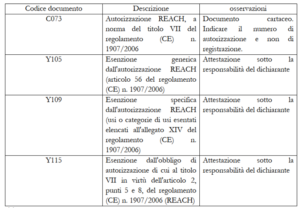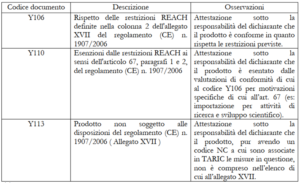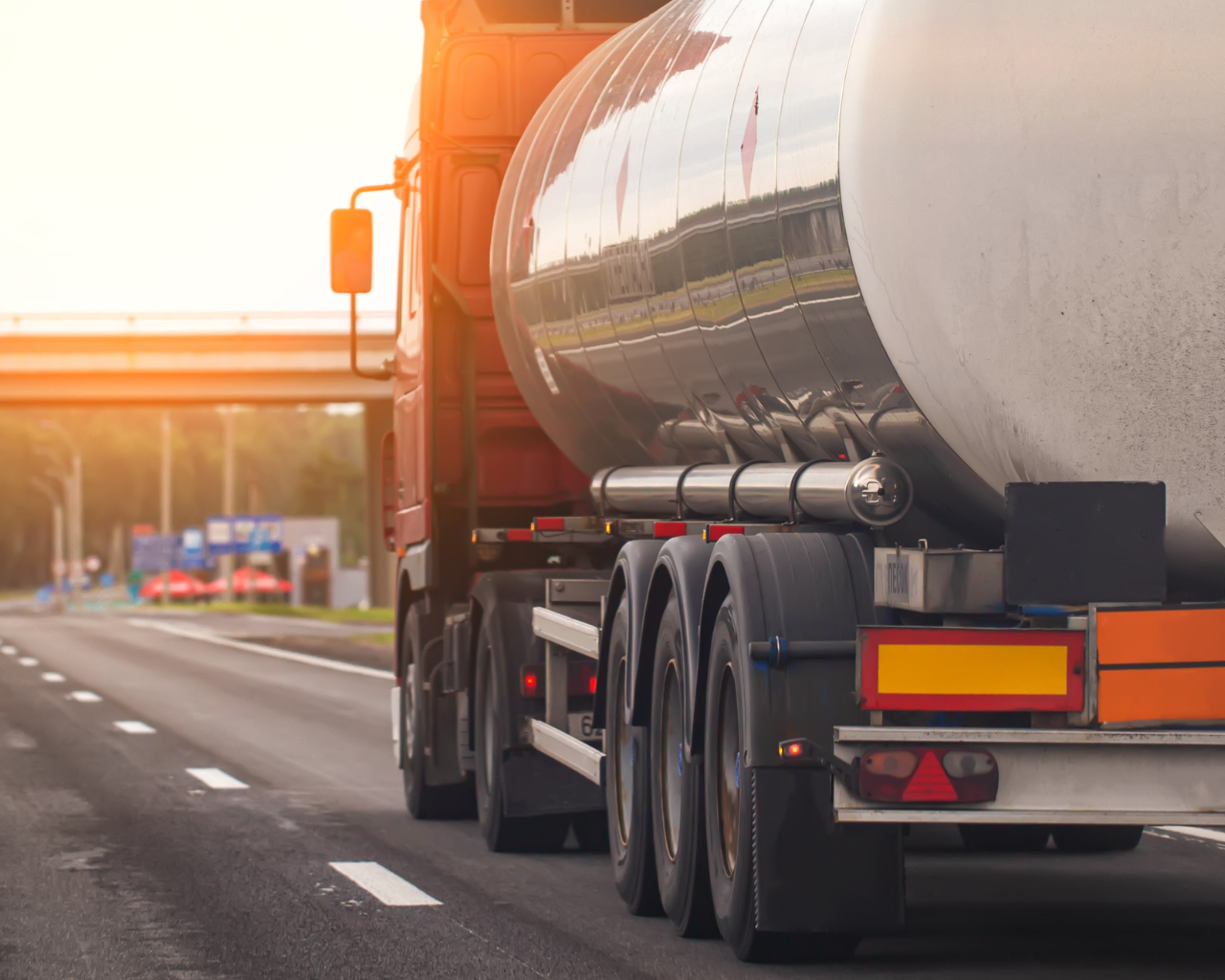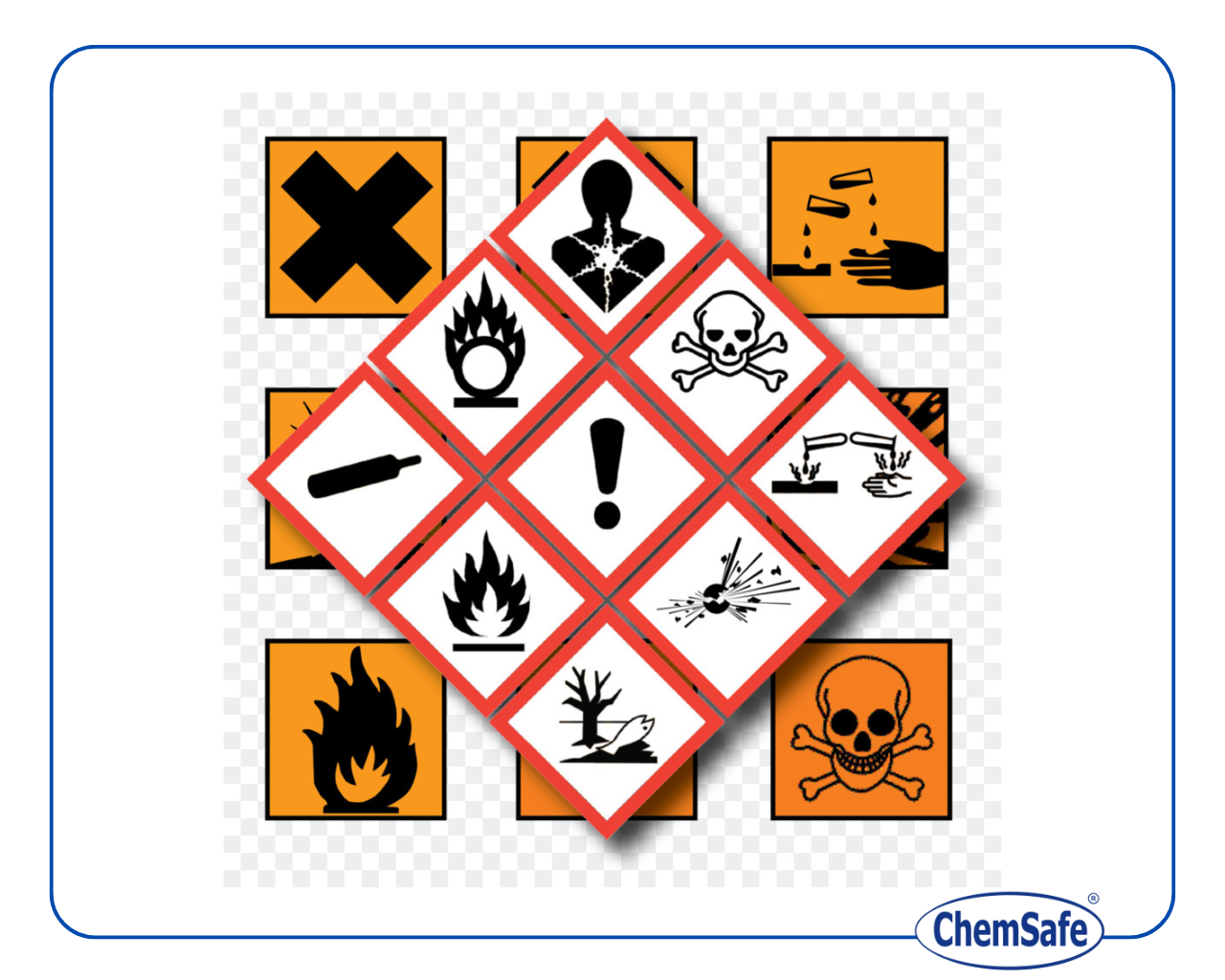L’Agenzia delle Dogane, con la Circolare TAR 2023-011, ha introdotto nuove misure per l’importazione delle sostanze pericolose che rientrano nell’Allegato XVII del Reg. REACH (Sostanze soggette a restrizione).
Gli importatori europei sono tenuti ad indicare nella dichiarazione doganale, casella 44, un codice relativo allo status REACH della merce importata.
Durante la procedura di compilazione, utilizzando il sistema predisposto dall’Agenzia delle Dogane, ad ogni voce doganale può essere associata o meno l’obbligatorietà di inserire tale codice, a scelta tra quelli di seguito riportati.
I Servizi della Commissione europea hanno provveduto, già nel 2019, a implementare nella banca dati TARIC le misure relative all’Allegato XIV Reg. REACH, con riferimento quindi alle sostanze per le quali l’immissione sul mercato è subordinata al possesso di un’autorizzazione rilasciata dalla Commissione stessa.
Si riportano di seguito i codici documento associati alle sostanze (allegato XIV) che richiedono un’autorizzazione o, se previste, le relative esenzioni, che devono essere indicati nella dichiarazione doganale:

Assieme al codice C073 bisogna inserire il numero di autorizzazione concessa all’importatore e allegare l’autorizzazione stessa.
Y105 – Esenzione da art. 56:
- A manufacturer, importer or downstream user shall not place a substance on the market for a use or use it himself if that substance is included in Annex XIV, unless:
(a) the use(s) of that substance on its own or in a preparation or the incorporation of the substance into an article for which the substance is placed on the market or for which he uses the substance himself has been authorised in accordance with Articles 60 to 64; or
(b) the use(s) of that substance on its own or in a preparation or the incorporation of the substance into an article for which the substance is placed on the market or for which he uses the substance himself has been exempted from the authorisation requirement in Annex XIV itself in accordance with Article 58(2); or
(c) the date referred to in Article 58(1)(c)(i) has not been reached; or
(d) the date referred to in Article 58(1)(c)(i) has been reached and he made an application 18 months before that date but a decision on the application for authorisation has not yet been taken; or
(e) in cases where the substance is placed on the market, authorisation for that use has been granted to his immediate downstream user.
- A downstream user may use a substance meeting the criteria set out in paragraph 1 provided that the use is in accordance with the conditions of an authorisation granted to an actor up his supply chain for that use.
- Paragraphs 1 and 2 shall not apply to the use of substances in scientific research and development. Annex XIV shall specify if paragraphs 1 and 2 apply to product and process orientated research and development as well as the maximum quantity exempted.
- Paragraphs 1 and 2 shall not apply to the following uses of substances:
(a) uses in plant protection products within the scope of Directive 91/414/EEC;
(b) uses in biocidal products within the scope of Directive 98/8/EC;
(c) use as motor fuels covered by Directive 98/70/EC of the European Parliament and of the Council of 13 October 1998 relating to the quality of petrol and diesel fuels (47);
(d) uses as fuel in mobile or fixed combustion plants of mineral oil products and use as fuels in closed systems.
- In the case of substances that are subject to authorisation only because they meet the criteria in Article 57 (a), (b) or (c) or because they are identified in accordance with Article 57 (f) only because of hazards to human health, paragraphs 1 and 2 of this Article shall not apply to the following uses:
(a) uses in cosmetic products within the scope of Directive 76/768/EEC;
(b) uses in food contact materials within the scope of Regulation (EC) No 1935/2004.
- Paragraphs 1 and 2 shall not apply to the use of substances when they are present in preparations:
(a) for substances referred to in Article 57(d), (e) and (f), below a concentration limit of 0,1 % weight by weight (w/w);
(b) for all other substances, below the lowest of the concentration limits specified in Directive 1999/45/EC or in Annex I to Directive 67/548/EEC which result in the classification of the preparation as dangerous.
Y109 – Esenzione prevista dall’Allegato XIV per l’uso specifico.
Y115 – Esenzione per l’uso in medicinali, food e come intermedio isolato.
L’ultimo provvedimento, obbligatorio dal 10 febbraio 2023, riguarda invece le misure aggiuntive relative all’Allegato XVII Reg. REACH, cioè le restrizioni in materia di fabbricazione, immissione sul mercato e uso di talune sostanze, miscele e articoli pericolosi.
L’inserimento nella dichiarazione doganale del codice “Y” identificativo della posizione relativa alla restrizione è obbligatorio (senza necessità di allegare alcuna documentazione).
Si riportano di seguito i codici documento richiesti nel caso di restrizioni e relative deroghe (Allegato XVII):

Il codice Y106 esclude la scelta di Y110 e Y113.
Y110 – Secondo l’articolo 67 del Regolamento REACH, una sostanza, in quanto tale o in quanto componente di una miscela o di un articolo, per la quale l’Allegato XVII contiene una restrizione, non può essere fabbricata, immessa sul mercato o utilizzata a meno che non sia conforme alle condizioni stabilite nella colonna 2 dell’allegato stesso. Ciò non si applica alla fabbricazione, all’immissione sul mercato o all’uso di una sostanza nella ricerca o sviluppo scientifici (deve essere specificato nell’allegato XVII) o all’uso di sostanze nei prodotti cosmetici, secondo Dir. 76/78/CEE, per quanto riguarda le restrizioni relative ai rischi per la salute umana.
Y113 – da indicare se la sostanza non rientra nell’allegato XVII.
L’inserimento di questi codici, nonostante abbia generato inizialmente confusione e subbuglio tra gli importatori, consentirà alle dogane una più celere verifica del rispetto dei requisiti previsti e di conseguenza un più veloce sdoganamento delle merci.
Documenti:







